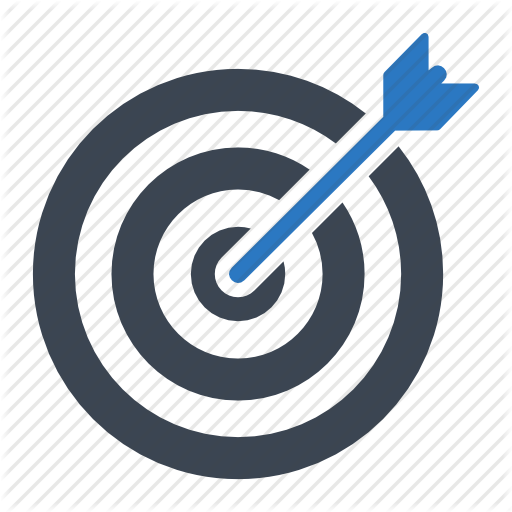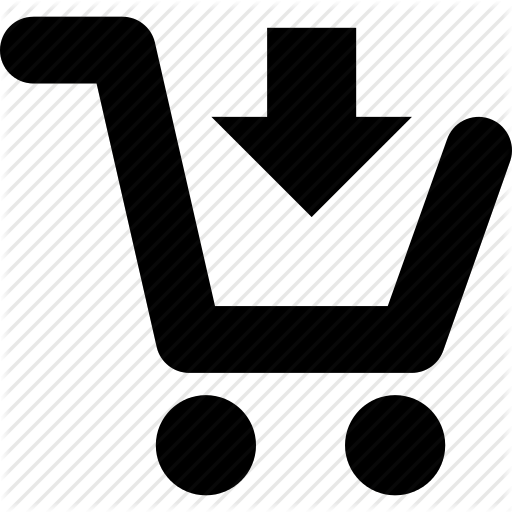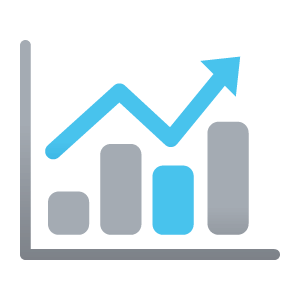B2B PPC advertisers have different considerations than B2C advertisers do. Few B2B advertisers are involved in ecommerce, for example, so tactics like shopping campaigns and cart abandon remarketing aren’t a factor. Most (not all, but most) PPC campaigns for B2B focus on lead generation: capturing names and email addresses that will be nurtured into leads in the future. Here are the top 5 considerations for B2B advertisers.
 Goals
Goals
Setting marketing goals should be the top consideration for all PPC advertisers, whether they’re B2B or B2C. For B2C, the goal is often obvious: sell more products! But for B2B, sales cycles are long. No one is going to buy a 6-figure software system on the first click. Potential buyers must be nurtured for months.
But that doesn’t mean you can’t track PPC conversions. Think about the micro-conversions along the way that indicate a hand-raiser. Are you using PPC to generate leads into the top of the funnel via form fills or email signups, where they’ll be nurtured over time? Or do you really need to drive sales-qualified leads? Knowing what your business objective is at the outset will help your PPC strategist develop a program that will meet those needs.
Be sure to track conversions all the way through the sales cycle. Set up goals and conversion paths so you can see how users make their way through the entire sales funnel. Use tools like Google Analytics multi-channel funnels and Acquisio conversion paths to monitor the process.
 Buyer Journey
Buyer Journey
Establishing goals will go a long way toward understanding the buyer journey. Your PPC team needs to understand not only how many users become initial leads, but how many actually make it through the funnel. You may find that a campaign with a lot of initial leads doesn’t generate any sales; and one that generates only a handful of initial leads converts most of them with high average sales. You can also see the impact of awareness channels, like display and social, that might be boosting leads from other channels like search PPC.
Buyer journey data is important as you set bids and assign values to conversions within your PPC campaigns. Being able to track leads back to the original campaign will lead to greater success in PPC.
 Content Marketing
Content Marketing
Content marketing is probably the #1 buzzword of 2014. And yet, for B2B advertisers, content is probably a crucial part of your marketing arsenal.
Many B2B websites only have a handful of true PPC landing pages, and those might not be optimized for conversions. But B2B advertisers often have white papers, articles, 3rd party thought leadership, videos, and other content that would be ideal for drawing in leads at the top of the funnel.
Perform a content audit to identify what can be used for PPC marketing, and then create landing pages promoting that content. Be sure to gate the content so you generate a lead from it.
 Mobile
Mobile
Every year for at least the last 5 years has been declared “the year of mobile,” and yet many B2B advertisers have been slow to get on the mobile bandwagon. By 2015, if you don’t have mobile landing pages (or a responsive site) and haven’t thought about how users will find you via mobile devices, you’ll be left behind.
Create mobile-preferred ads with messaging relevant to users on the go. Users on mobile devices often use different search queries than those on desktops, so match your ad copy to these queries.
Use call extensions to drive phone leads to your call center. For many B2B advertisers, phone calls are more valuable than form fills. Using mobile call extensions is a highly effective way to drive calls – after all, the user has a phone in their hand, and all they have to do is tap on the “call” icon!
Many mobile searches are directional in nature. Use location extensions to help people find your physical location. One bonus of using location extensions is that you can add a phone number to the location extension – thereby giving you essentially a call extension and a location extension in one.
Don’t forget your landing pages – make sure they’re mobile-friendly. Responsive design is a must for 2015. Or, better yet, create distinct mobile landing pages designed to drive phone calls or simple form fills.
 Conversion Rate Optimization
Conversion Rate Optimization
B2B landing pages may be the most neglected aspect of B2B PPC. It’s common for advertisers to develop a robust front-end PPC strategy, with the best keywords, ad copy, targeting, and content – and forget to create good landing pages. Don’t fall into that trap!
Follow conversion rate optimization best practices. Ensure your pages answer the question the searcher asked with their search query. Tell them what you want to do: fill out a form, call, download a whitepaper, get a quote, download a spec sheet, etc. Remove distractions and excessive scrolling. Use visuals to generate attention. Create a sense of urgency. State the benefits the user will get from completing the desired action.
These are basic conversion optimization principles, and yet many businesses don’t think about them. Well-crafted landing pages can make all the difference in the success of your PPC campaign.
The next time you create a B2B PPC campaign, set yourself up for success by keeping these considerations in mind.




